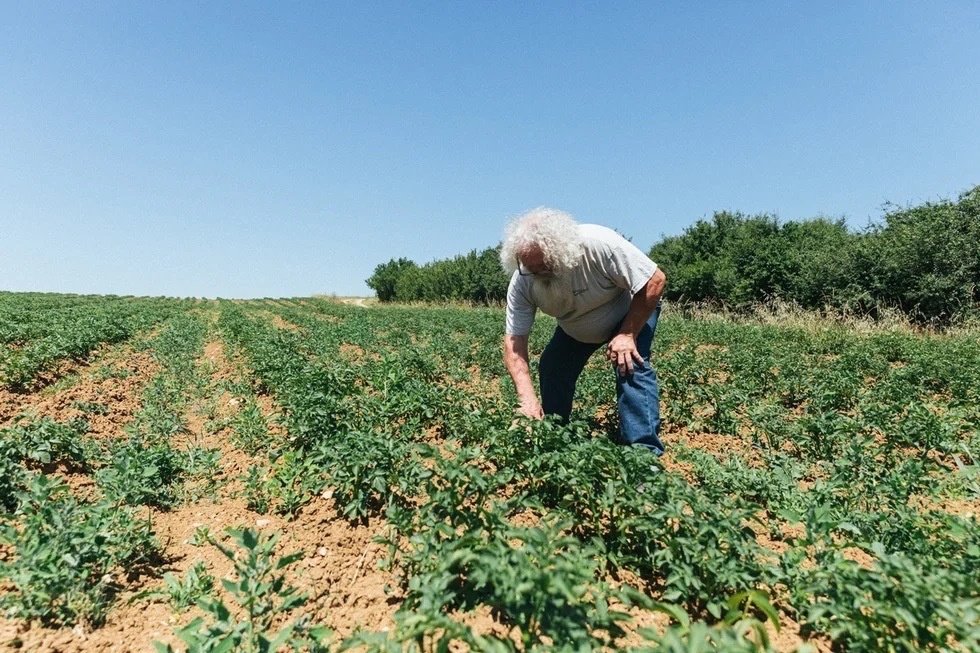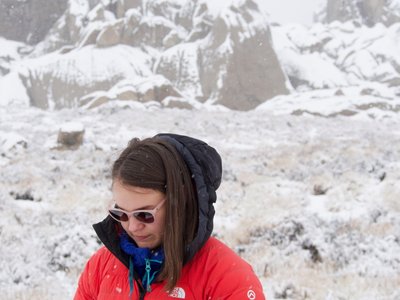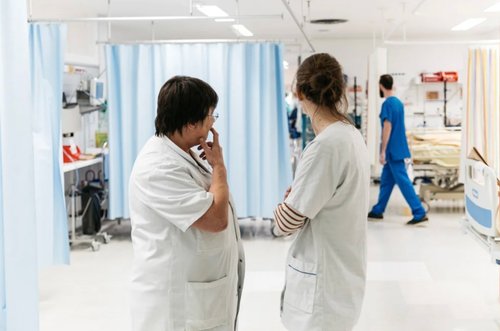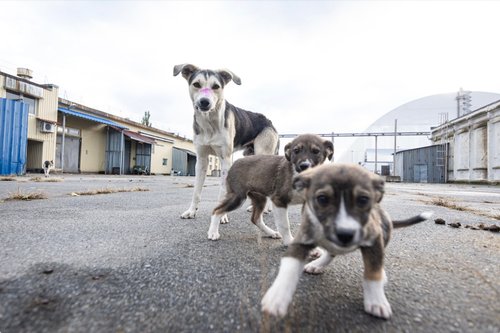Here’s how to make work safer as climate change worsens heat stress
23. 8. 2023
4 min.


Ula Chrobak is a freelance journalist based in Nevada. You can see more of her work at https://www.ulachrobak.com/
Climate change is coming for workers. Hotter weather is poised to affect productivity and cause greater rates of heat illness and even death – especially for those in physically-demanding jobs who have less say over their working conditions. Reducing climate-warming emissions will be crucial to protecting these workers, but that’s not all that can be done. Other actions, including enacting regulations and increasing workers’ ability to advocate for themselves, can reduce the toll of brutal heat and humidity. Here’s how heat stress impacts people on the job and what can be done to increase safety in hotter weather.
How heat wears on workers
Temperature isn’t everything. How we experience heat is affected by the amount of heat produced by what we’re doing, ambient heat in the environment, and the type of clothing we’re wearing, among other factors. Most of the energy expended in moving muscles becomes excess body heat, which needs to be released into the environment for the body to maintain a normal temperature. Sweating helps to cool us down at high temperatures through evaporation, but excessive heat or high humidity can make it impossible to keep a steady core temperature.
This doesn’t just feel uncomfortable, it affects our ability to function. Our productivity slows down when temperatures creep over about 77ºF; at about 93ºF, workers lose half their capacity for moderate intensity labor, according to a 2019 report by the International Labour Organization (ILO). Without a reprieve from the heat, workers may experience symptoms such as headaches, nausea and dizziness. In the worst cases, these effects progress to heat stroke symptoms including high body temperature, disorientation, and loss of consciousness. Without timely treatment, heat stroke can be fatal.
In hot weather, mental health risks go up too. Difficulty concentrating and irritability rise, and extreme heat events have even been linked to increased hospital admissions for psychiatric emergencies.
Workload is a factor in increasing our risk of heat-related illness, explains Margaret Quinn, a professor of public health at the University of Massachusetts, Lowell and an industrial hygienist. Outdoor jobs involving heavy lifting at a fast pace, for example, pose greater risks in the heat than less vigorous and indoor jobs. According to the ILO report, workers in agriculture, construction, natural resource management, trash collection and transportation are among those most at risk. Some indoor settings, such as factories and warehouses, can also present heat dangers.
Even if workers avoid acute heat illness on the job, some still face long-term consequences. In some hot parts of the world, including Saudi Arabia and Costa Rica, researchers have documented a higher rate of chronic kidney disease in outdoor workers, Quinn says.
Climate change will worsen these effects
As the temperature climbs, so does the rate of injuries at work. Roughly every 1ºC (1.8ºF) increase in temperature correlates with a 1% increase in workplace injuries, says Juley Fulcher, a worker health and safety advocate at the nonprofit Public Citizen. A report by that organization estimates that hot weather has a role in at least 170,000 worker injuries every year across the country. And, according to an analysis of US labor data, heat-related deaths have doubled since the early 1990s.
Fulcher adds that daytime temperatures are not the sole culprit in heat illness as the nighttime is important for cooling down and preparing for work the next day. “When the day is done, you need eight to 12 hours in a cool location to get your body back to normal,” she says. In heat waves in which the nighttime temperature remains in the 80s and 90s, workers – especially those without air-conditioning at home – may not be able to recover sufficiently.
The ILO report estimates that in 2030, “2.2% of total working hours worldwide will be lost to high temperatures – a productivity loss equivalent to 80 million full-time jobs,” with that loss mostly concentrated in agriculture and construction. Heat stress in workers can ripple through economies, ultimately leading to knock-on effects such as higher food prices, the authors write.
Helping workers to weather the heat
The most effective solution to this problem is to curb global carbon emissions. In the meantime, however, adaptation measures can help to reduce heat-related injuries. One solution used in agriculture is to schedule around the hottest part of the day. Quinn says that many workers start their jobs at about 4AM so they can take a break during dangerous afternoon temperatures. One study found that 30% of heat-related global labor losses could be recovered through schedule changes. However, the study authors emphasized that this potential to adapt declines by about 2% with every 1ºC (1.8ºF) of warming.
Some basic steps employers can take to protect workers include providing shade, water and breaks. Allowing new employees to gradually acclimate to hot job sites can also alleviate risks. However, the federal government has yet to specifically regulate heat-related worker safety, says Fulcher. While the Occupational Safety and Health Administration requires a workplace free of hazards, the agency has not yet created an enforceable standard for employers to reduce the risk of heat-related harms. Under the Biden Administration, the agency has proposed plans to do so, but it may take years before such a standard is adopted officially.
Introducing heat standards
Some states have implemented their own workplace heat standards, including California, Colorado, Washington, Oregon and Minnesota. California’s standard, issued in 2005, imposes heat safety requirements starting at 80ºF. After the rule was put in place, one study estimated that annual heat-related injuries decreased by about 30%. Mechanization of labor in industries such as agriculture could reduce heat-related injuries, too, the authors of the ILO report said.
Other research has also found that the ability of workers to set their own pace can help avoid heat dangers. In a study of construction workers in Saudi Arabia, Quinn found that those who took small breaks as needed were less likely to experience heat illness. “When you just have to pause for a moment and set down those cinder blocks that you’re carrying,” she says, “that self-pacing was important for preventing heat over exposure.”
Unfortunately, many workers feel pressure to ignore their instinct that they need a break. Some, including delivery drivers and warehouse workers, are even monitored for efficiency using electronic tracking and surveillance tools. “Those things have forced workers to override their innate sense and ability to take even a micro break,” says Quinn. “And employers need to understand that a worker can maintain his or her productivity over time if they’re allowed to take micro breaks.”
The ability to organize at the workplace can also help provide better conditions and great ability to take precautions in heat. Recently, after United Parcel Service workers threatened to hold a strike, the company agreed to concessions including wage increases and equipping new trucks with air-conditioning. Better all-round working conditions – from increased pay to cooling equipment – can help workers avoid the dangers of overexposure to heat, which will become more and more important as the globe continues to warm.
Photo: Welcome to the Jungle
Follow Welcome to the Jungle on Facebook on LinkedIn and on Instagram and subscribe to our newsletter to get our latest articles every day!

Další inspirace: Working for the planet

The ‘passion tax’ animal welfare workers are expected to pay
Workers in welfare and rescue organizations, zoos, and veterinary say their love for animals is often exploited, leading to burnout and high turnover
04. 3. 2024

Healthcare industry emissions are a problem, but doctors can help
Medical professionals are working to address the greenhouse gas impact of their industry, from changing clinic practices to...
05. 2. 2024

Sorting the green from the greenwashed: How sustainable is your employer?
A majority of Americans care about corporate sustainability. But how do you know if your company is walking its climate talk?
27. 3. 2023

The wild dogs of Chernobyl: the story of the pups born on radioactive wasteland
What happened to the animals left behind after the nuclear disaster in Ukraine, and who are the people helping them?
16. 11. 2022

Lights, camera, clean up your act: how movies try to go green
As the energy used for a blockbuster production could light up Times Square for five days, studios are under pressure to green their practices
13. 10. 2022
Zpravodaj, který stojí za to
Chcete držet krok s nejnovějšími články? Dvakrát týdně můžete do své poštovní schránky dostávat zajímavé příběhy, nabídky na práce a další tipy.

Hledáte svou další pracovní příležitost?
Více než 200 000 kandidátů našlo práci s Welcome to the Jungle
Prozkoumat pracovní místa